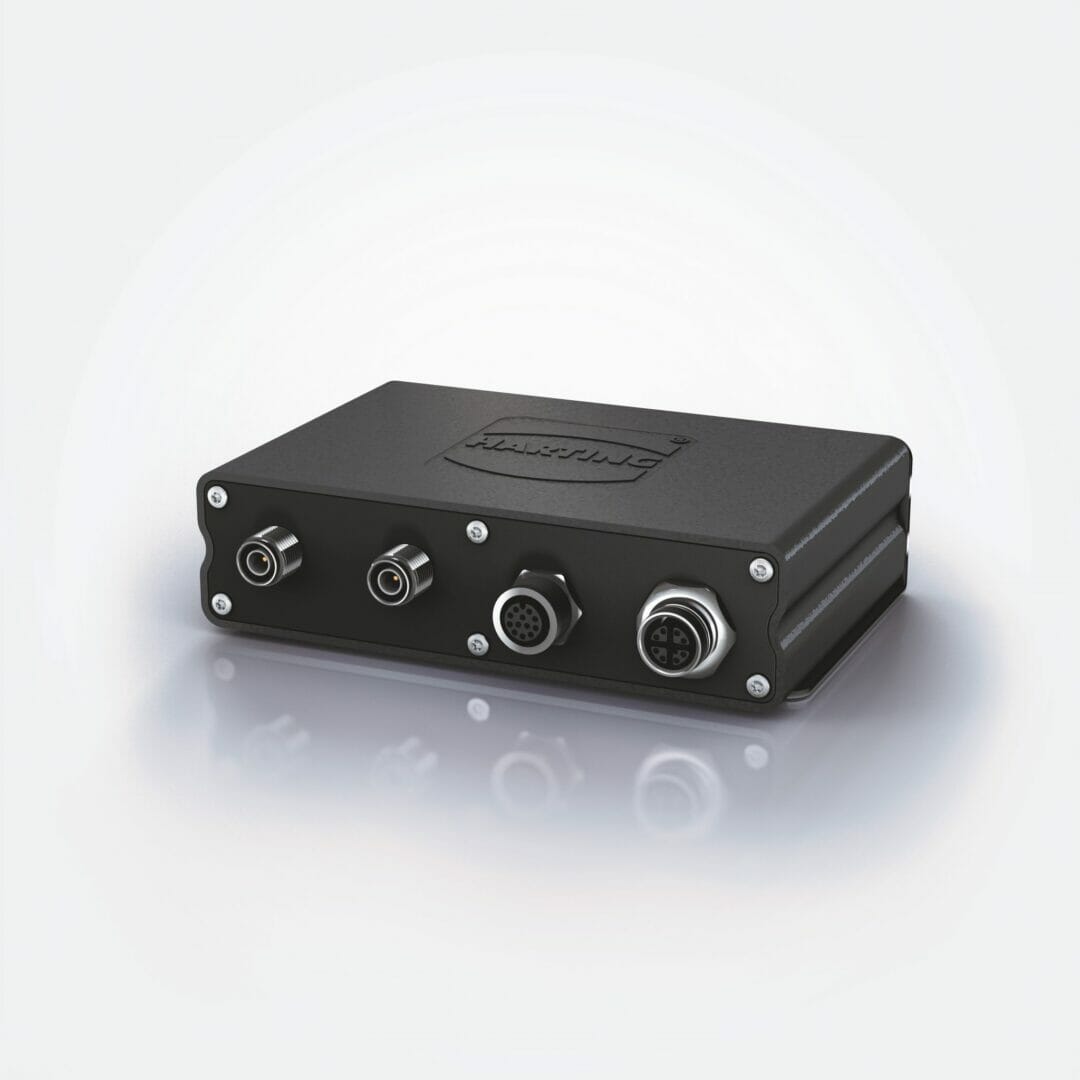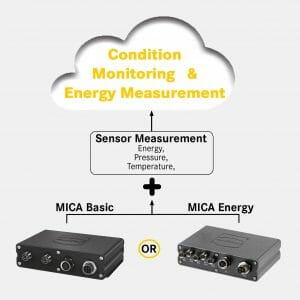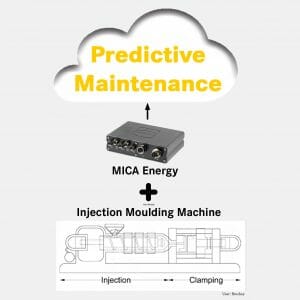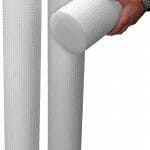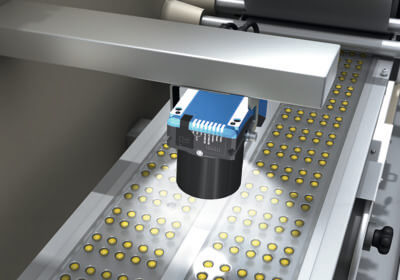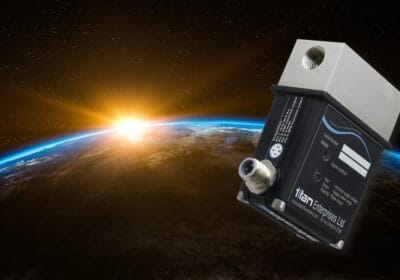- benefits include better productivity, cost savings and extended machine lifetimes
One of the key issues facing today’s manufacturing industry is how to improve the productivity of existing production lines for minimum cost outlay. This article demonstrates how a “digital retrofit” of integrating additional intelligent devices and sensor technology into a well-established production line of plastics injection moulding machines can help to achieve these objectives.
Introduction
An important element of Industry 4.0 is the ability to apply digitalisation to the production environment by adding more intelligence into the existing process. Initially manufacturers have been wary of Industry 4.0, on the assumption that effective implementation would require expensive major changes to production lines. However, through a digital retrofit approach, it is possible to “smarten” up existing processes for minimal cost over a short period of time, resulting in a fast return on investment and immediate productivity gains.
Digital retrofit provides four different ways to improve production processes, increase cost savings and extend the lifetime of different types of machinery: Legacy machine protocol conversion; Condition monitoring / Energy measurement; Asset management; and Predictive maintenance.
Legacy machine protocol conversion
Central machine monitoring and process optimisation offer the best way to ensure that production lines and their associated constituent parts operate more effectively and economically. Many machines in well-established production lines, which may be between 15 and 30 years old, can still perform their main functional tasks successfully. However, they do so much less efficiently than their modern-day counterparts. For example, they do not have the same level of computing power, enough memory capacity to record and store relevant data, or the ability to communicate with their modern equivalents. In many cases, these machines also use data formats and operating communication language protocols from the 1980s and 1990s, which are no longer used by today’s PLCs and industrial PCs.
A prime example of a production environment that accommodates mixed protocol legacy machines would be a plastics injection moulding machine (PIMM) line. Such machines, when well maintained, can attain as much as a 30-year operational life. However, some of the older software protocol operating languages (e.g. EUROMAP 15), cannot be directly connected to a factory MES (Manufacturing Execution System) without expensive annual custom software licensing charges. In a lot of factories these machines still require individual programming by an operator, which can be very time consuming for reasonably large installations and therefore potentially requiring input from multiple personnel.

An MES keeps track of all manufacturing information in real time, receiving up-to-the-minute data from robots, machine monitors and employees. Although manufacturing execution systems used to operate as self-contained systems, they are increasingly being integrated with enterprise resource planning (ERP) software suites. The goal of a manufacturing execution system is to improve productivity whilst reducing cycle-time and the total time required to produce an order.
HARTING, a world leader in Connectivity & Networks solutions, now offers a new innovative solution to these challenges. MICA (Modular Industrial Computing Architecture) is an edge computing device in the form of a digitally retrofittable IP67 package with Linux-based open-source software. Its modular software and hardware architectural design platform permits the user to choose the programming language and development environment they are most familiar with. In addition, MICA is rugged, compact and maintenance-free, meaning it is suitable for use in the harshest industrial environments.
For the PIMM specific plastic moulding component manufacturing environment, HARTING has developed the “MICA EUROMAP 15” variant, which converts the legacy EUROMAP 15 TCP/IP machine operating communications protocol into OPC UA for example, via an intermediate JSON software format. In addition it offers the potential to provide IIoT web enablement and access to “Cloud” services for Big Data analysis or virtualisation, via an optional downloadable MQTT container. As a result, the “MICA EUROMAP 15” provides a customisable interface to the plant MES/ERP, configurable with any specific operational software. By digitally retrofitting a “MICA EUROMAP 15” in this way, the user can also eliminate expensive custom “MES” access software licensing charges. Of course you are also able to integrate the legacy machines for a fraction of the cost of installing a new state-of-the-art protocol operating machine.
By integrating IIoT/MES accessing edge computing devices directly with legacy machines across its own in-house production injection moulding lines, HARTING has proved that a return-on-investment payback period of 6-12 months can be achieved. Machine process parameters can now be remotely monitored and modified more quickly via centralised factory control stations, reducing downtime and enabling manpower to be much more effectively employed. Machine operators could even monitor and affect the process of the production line from off-site, via a smartphone or suitable tablet device.
In the near future HARTING will also be releasing a PIMM specific “MICA EUROMAP 63” variant that provides a similar solution approach for the more up-to-date EUROMAP 63 protocol based machines.
Condition monitoring / Energy measurement
Additional real-time condition monitoring of legacy machine key operating processes can help to reduce downtime and extend lifetime, thus achieving manufacturing productivity improvements. This can be accomplished by digitally retrofitting additional stand-alone MICA devices to store, analyse and process data from existing or extra retrofitted sensors. As a result, tasks such as monitoring pressure, temperature and flow rates becomes easy, whilst allowing remote centralised process control adjustment via the MES network. Communication with the machine fitted sensors is achieved via a simple Ethernet switch and interlinked active I/O blocks. Either a “MICA Basic” or “MICA Energy” can act as a suitable device in these circumstances.
Asset management
A MICA RFID variant converts the MICA device into a specific RFID Reader, which, when used in conjunction with passive UHF read/write transponders that are fitted to key replaceable mould tools, allows maintenance records to be written and stored onto that particular tool. This can ensure the optimum refurbishment scheduling of high value mould tools
Predictive maintenance
Critical operating parts of a plastic injection moulding machine which are subject to continuous wear and tear include the plasticising screw pump and associated check valves. As wear increases, this can result in a significant number of rejected parts and expensive financial losses. This situation can be resolved by monitoring the changes in the operating power curve characteristics of the screw pump and the pressure loading at the check valves.
Integration of a “MICA Energy” variant provides RS485 Modbus TCP/IP compatible I/O interfaces for linking to the appropriate functional I/O blocks on a machine that access this specific operating data. By pre-setting critical safe operational limits, the “MICA Energy” can set up alarm conditions for when these limits are breached, allowing machine operators to carry out corrective maintenance as part of the important predictive maintenance process.
Conclusion
HARTING’s MICA (Modular Industrial Computing Architecture) range of rugged, compact edge computing device variants are ideal for applying cost-effective digital retrofit Industry 4.0 productivity improvements into existing plastics injection moulding production facilities. They can smarten up legacy machines, enabling users to get more out of existing and often aging assets. Through the collection of smart performance data, MICA can help to identify weaknesses in the production process and opportunities for improvement. They can also extend machine lifetime, increase machine service intervals and reduce line downtime.
MICA provides a platform to enable the best business decisions to be taken to optimise return on investment on plastics injection moulding line capital projects. Also, by following a step-by-step digital retrofit approach, companies can adjust their Industry 4.0 implementation timing and investment strategy in line with a more manageable phased modernisation approach, according to their available budget and labour resources.
To find out more about HARTING’s MICA and passive RFID technologies please visit www.HARTING.co.uk/mica

